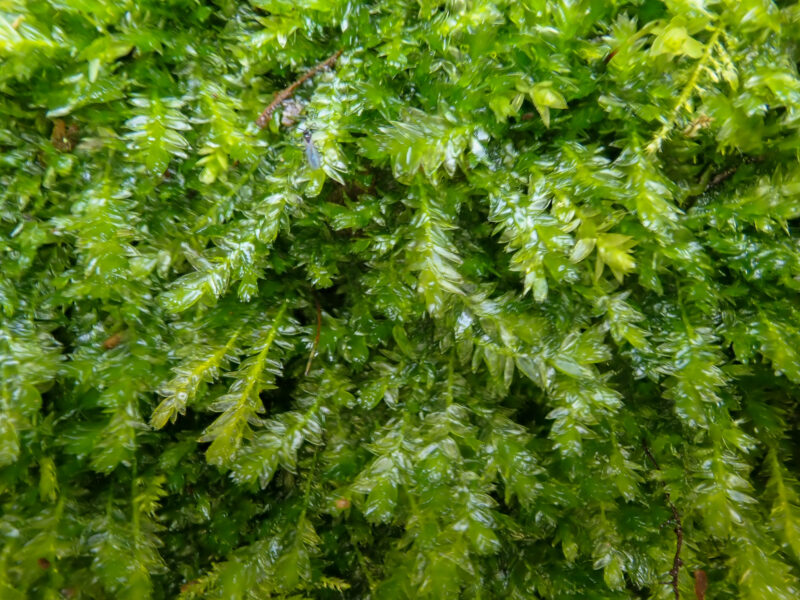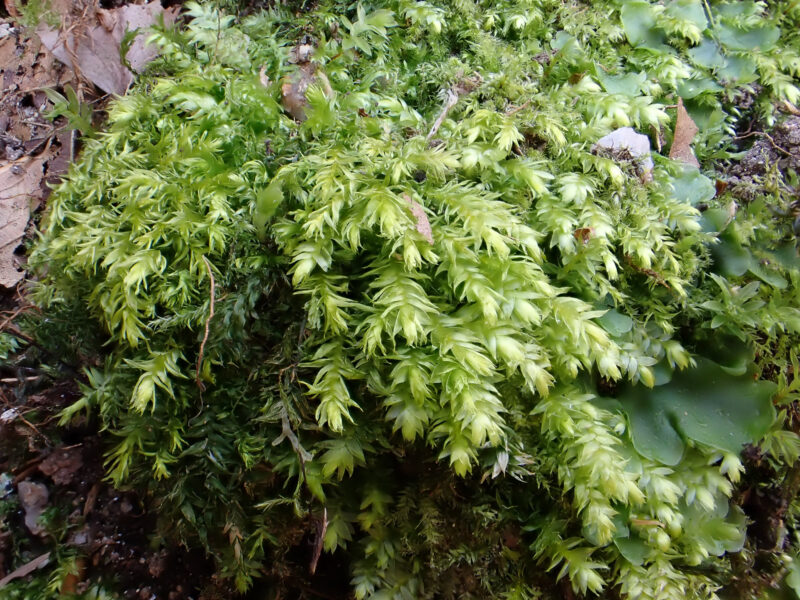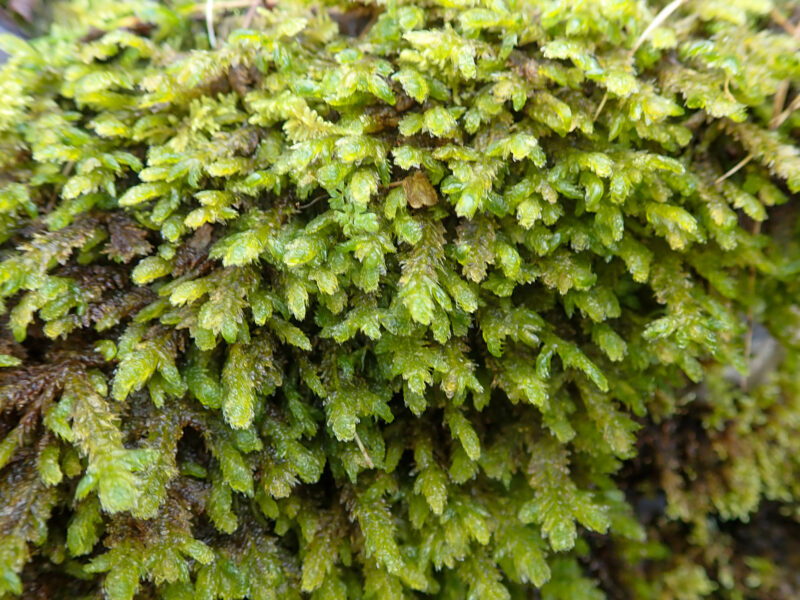Identification notes
An alternative English name for this large and attractive moss might be ‘white worms’, for that quite nicely describes its appearance.
Plagiothecium is one of a few genera of pleurocarpous mosses with laterally compressed (complanate) shoots. Others include Neckera, Homalia, Taxiphyllum and Pseudotaxiphyllum. It is distinguished from all of these by having alar cells longly decurrent down the stem.
Plagiothecium species often need microscopic examination to determine individual species, but this rarely needed with P. undulatum as it is such a distinctive moss. Firstly, its white to pale green colour is very unusual and conspicuous, especially in dry plants. Then, the leaves are wrinkled transversely, hence the epithet undulatum. It is also a rather large moss, of similar size to Neckera crispa, which also has undulate leaves. Fortunately for the field bryologist, the two have very different habitats – P. undulatum likes decidedly acid substrates whilst N. crispa is a strict calcicole and most at home on limestone.
Read the Field Guide account









